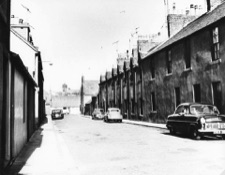David Dorward Raitt’s tree
David Dorward Raitt, my paternal great grandfather, was the youngest son of John Raitt and Elizabeth Dorward. He was born on 29 April 1846 in Arbroath (surname given as Rait) and died in St Vigeans on 15 October 1887, aged only 41. Like his father and elder brother James Dorward Raitt, David was a sailor. At his marriage on 15 January 1869 at 17 Panmure Street, Arbroath, home of his bride, Mary Purvis, age 22, his occupation was given as Seaman Master, Merchant Service, age 22 - his residence was 18 Hannah Street, Arbroath. David was Master or Mate of a dozen or more ships and sailed to British North America (Canada), Greenland, Iceland, Norway, the US East coast and Gulf ports, the Mediterranean, Cape colonies, Ascension and St Helena ,the Baltic, the North Pacific and West coast of America, as well as plying European coastal trade and being involved in trade with China which took him to Australia and New Zealand in addition. (And what a coincidence that his brother James Dorward Raitt was in the same waters just a few months later - maybe they had even passed each other somewhere on the high seas.) The ships he sailed on and some fascinating details about his service are outlined below. Information about other Arbroath mariners can be found on a separate page, as can details of the examination requirements they had to undertake to achieve competency as well as an overview of what it meant to be a Master Mariner. Details about the merchant service record of David Dorward Raitt’s father John Raitt, his brother James Dorward Raitt and his uncle Alexander Raitt will be found on their pages.
----------
David Dorward Raitt received his Certificate of Competency as Second Mate from the Board of Trade on 9 April 1867. It stated that he was duly qualified to fulfill the duties of Second Mate in the Merchant Service. Subsequent to that he received his Certificate of Competency as Only Mate on 5 April 1870, and then his Certificate of Competency as Master on 8 January 1876. His first recorded voyage as a ship’s boy on 1 May 1861 just two days after his 15th birthday.
He made an application (which cost him £1) to the local marine board at the port of Dundee to be examined for obtaining a certificate of competency as a Second Mate on 5 April 1867. He was almost 21 and gave as his date of birth 29 April 1846 in Arbroath and his address at the time of application as 18 Hannah Street, Arbroath and asked that the certificate be sent to the Mercantile Marine Office in Arbroath. He had no previous certificates of competence. He passed the required examinations in navigation and seamanship for Second Mate on 5 April 1867 at Dundee and this information was duly and transmitted by the Examiners to the Registrar-General of Seamen to the Shipping House or Customs House of Arbroath on 8 April 1867. His certificate, number 85.111 was issued at the port of Arbroath on 11 April 1867. Things didn’t take long in those days!
On 31 March 1870 in Dundee David Dorward applied to be examined for a certificate of competency as Only Mate. This time he paid 10 shillings. He gave his address as 15 Dishland Street, Arbroath and noted that he had already a Certificate as Second Mate based on competency as opposed to service. He passed the required examinations in navigation, seamanship and commercial code signals for Only Mate on 2 April 1870 at Dundee and this information was duly and transmitted by the Examiners to the Registrar-General of Seamen to the Shipping House or Customs House of Arbroath on 4 April 1867 and his certificate for competency as Master was given, under the seal of the Board of Trade, on 7 April 1870, shortly before his 24th birthday.
A few years later, on 5 January 1876, when he was not quite 30, he applied to be examined for a certificate of competency as an Ordinary Master. His address was still 15 Dishland Street. He paid the fee of £2 and stated that he had a previous certificate of competency as an Only Mate. Interestingly, under the heading No. of Royal Naval Volunteer’s Certificate, if now, or formerly in the Reserve, is written RV 2.50,985 – which possibly signifies that he was a volunteer reserve for naval service. He passed the ordinary examination on 6 January 1876 and was duly awarded his certificate (85.111) on 13 January 1876.
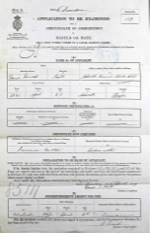
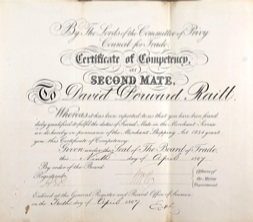
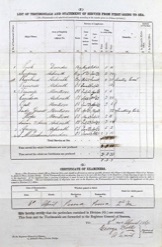
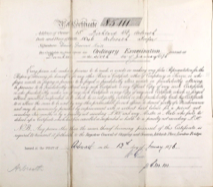
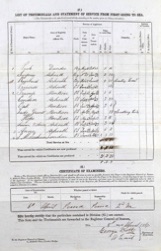
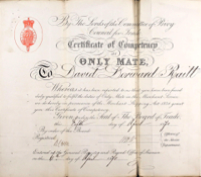
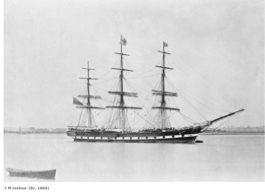
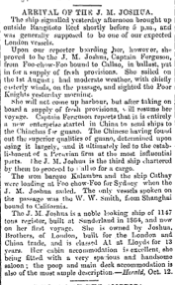
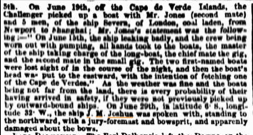
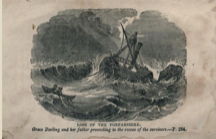
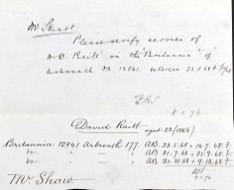
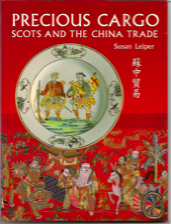
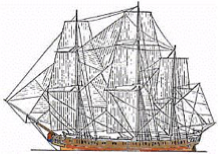

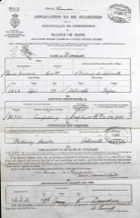
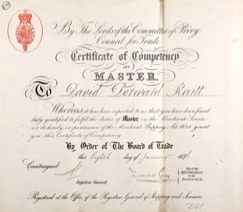
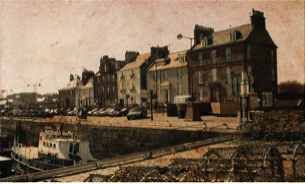
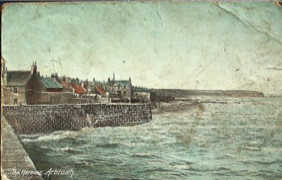
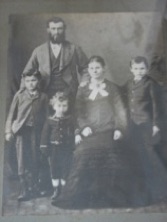
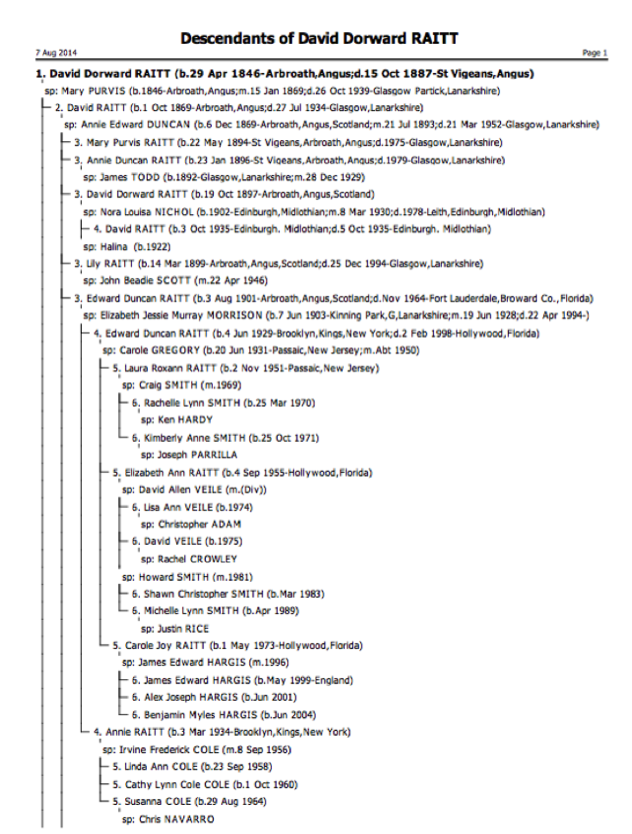
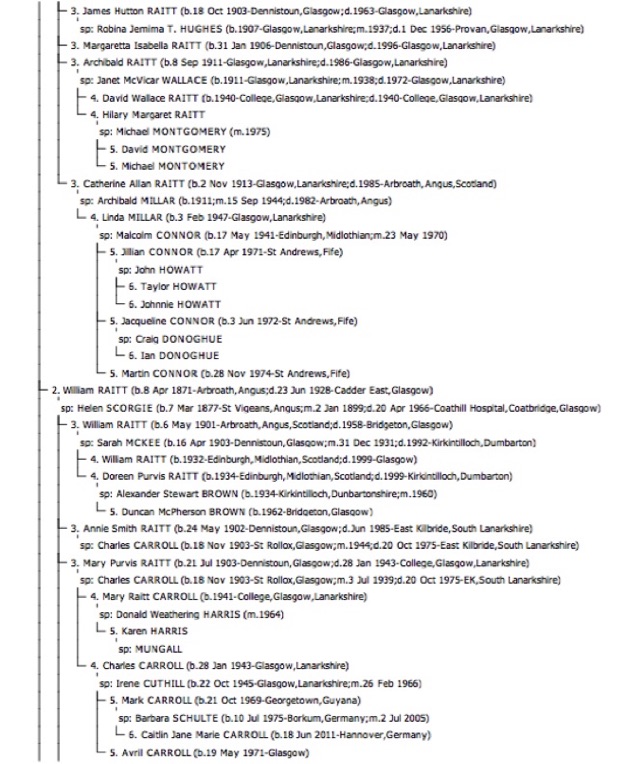
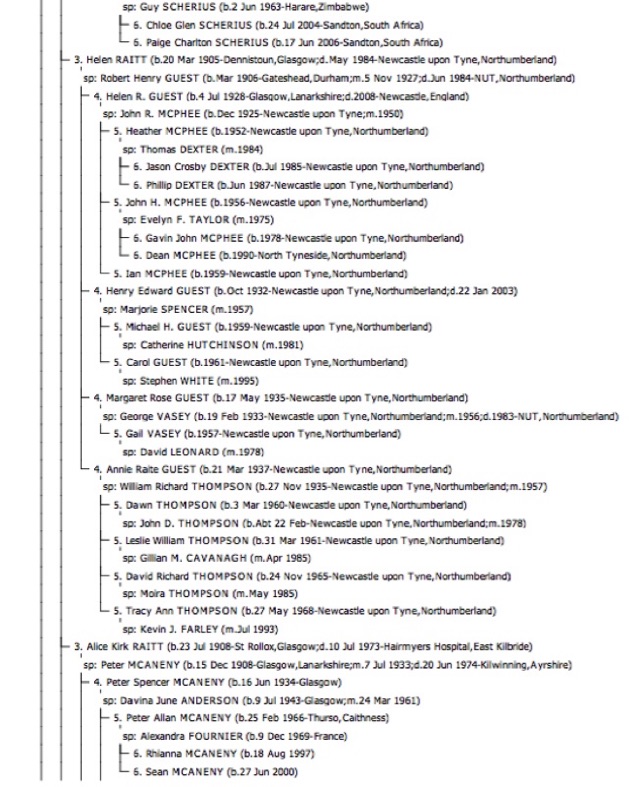


David Dorward Raitt and Mary Purvis had four children; David born 1 October 1869; William (my grandfather), born 8 April 1871; Alexina Dunbar born 19 December 1872; and John Purvis born 23 October 1874 - all born in Arbroath. Alexina was likely named after her aunt, Alexina Dunbar, who married her mother’s elder brother John Purvis. She died before she was one year old.
It appears that Mary Purvis and her sons and families moved en-masse from Arbroath to Glasgow between August and December 1901. What occasioned the move is not yet fully known - maybe it was the bright lights of a big city, though the air was probably cleaner and fresher in Arbroath; possibly it was better job prospects or more customers for their bakery/restaurant or painting work.
In the 1851 census for Arbroath Ladyloan, living at 15 Hannah St is David Raitt, 5, scholar (born 1846 Arbroath) with his parents John Raitt, head, 45 (abt 1806 Arbroath), seaman; wife Elizabeth, 42 (abt 1809 Arbroath); children Margaret, 17 (1834 Arbroath), powerloom weaver; John, 15 (1838 Arbroath), machine flax dresser; James, 10 (1841 Arbroath), housework; Elizabeth, 1 (1850 Arbroath). In the same house is Elizabeth's mother Margaret Dorward (nee Philip), 87 (1764 Arbroath) and her two unmarried sons David Dorward, 56 (1795 Arbroath), seaman; and James Dorward, 45 (1806 Arbroath), seaman.
In the 1861 census for 18 Hannah St, Arbroath, David Raitt, 14, living with his mother Elizabeth Rait, 52, husband sailor;and sisters Margaret, 27; and Elizabeth, 10 - all born Arbroath. Their accomodation consists of three rooms with one or more windows.
In the 1871 census for 21 Dishland St, St Vigeans is Mary Raitt, head, seaman's wife, aged 25 and son David, aged 1. David Dorward Raitt was presumably at sea. Interestingly, for some reason there is no indication of the number of rooms with one or more windows, unlike most of the other census entries on the page.
In the 1881 census for Arbroath, living at 41 Helen St, St Vigeans is Mary Raitt, wife, head, age 35, sailor's wife, born Arbroath; and sons David, 11, scholar, born Arbroath; William, 9, scholar, born Arbroath; and John P., 6, scholar, born Arbroath. David Dorward Raitt was presumably away at sea.
In the 1891 census for St Vigeans, living at 15 St Vigeans Road, is Mary Raitt, widow, head, age 45; sons David, 21, apprentice painter; and John, 16, heckle machine worker - all born Arbroath. Also living with them is Mary’s sister, Elizabeth Purvis, 55, unmarried, unemployed spinner, born Brechin. They are occupying four rooms with one or more windows.
In the 1901 census for 24 Howard Street, St Vigeans living in two rooms with one or more windows are Mary Raitt, 55, widowed, housekeeper; son John, 26, single, pastry chef on own account - both born Arbroath; and Elizabeth Purvis, 65, single, born Brechin.
In the 1911 census for 14 Earlston Avenue, Glasgow, is Mary Raitt, head, widow, 65, born Arbroath and her sister Elizabeth Purvis, 75, single, born Brechin. Also at that address is son John Raitt, 36, pastry baker, born Arbroath; his wife Georgina, 37, born Inverkeilor; and their children John, 9, at school, born Glasgow; and Jemima, 7, at school, born Glasgow. They are occupying two rooms with one or more windows. In the same tenement building in addition is Mary's son William Raitt and his large family - also occupying two rooms with one or more windows.
----------
The Valuation Rolls provide some further limited information. It is not yet certain where Mary Raitt and her sons were in the 1885/6 or 1895/6 Rolls. In the 1881 census they were all living in Helen Street, St Vigeans; and in the 1891 census they were living in St Vigeans Road, St Vigeans (except William who was in Glasgow.) The Valuation Rolls for Arbroath and St Vigeans for these two years do not have a Mary Raitt (her husband David Dorward Raitt was probably at sea which is why he is not listed either). The three sons are not listed individually (William was probably still in Glasgow in 1895 - though likely a lodger as he is not listed as a tenant). There is a David Raitt living in a flat in Ladyloan, Arbroath in 1895, but his occupation is given as printer, rather than painter - unless this is a mistake (though another chap in another flat at the same address is also described as a printer.)
In the Valuation Roll for 1905-1906, Mary Raitt is living as a tenant in a house at 33 Earlston Avenue, Glasgow, along with others including son William, listed separately. The proprietor of the property was David Graham, residing at 32 Cathkem Road (?) and the annual rent was £9 18s for Mary and £9 15s for William who’s occupation was traveller.
In the Valuation Roll for 1915-1916, Municipal Ward 6, Glasgow, living in a house at 14 Earlston Avenue, was tenant Mrs Mary Raitt. The ground annual feu duty was £20 and the annual rent or value was £11 10s. Also living there were some Belgian refugees, as well as other tenants. The proprietor was Mrs Jane Davie, Kenilworth, Coatbridge, per D. Graham, 180 Hope Street, Glasgow. It is not know whether son Jon was also living with her.
In the Valuation Roll for 1920-21 for the City and Royal Burgh of Glasgow, Municipal Ward 8, Parish of Glasgow, Rating area Glasgow, living as a tenant in a house (along with others) at 14 Earlston Avenue is Mrs Mary Raitt. The property was owned by Mrs Janet Davie of Kenilworth, Coatbridge and the annual rent or value of the presumably flat occupied by Mary was one of the highest for the building at £14 15s. Since neither sons William and John and their families are elsewhere mentioned in the Roll, then presumably they were living with their mother.
On the other hand, Mary’s other son, David, was living with his family at 6 Chatham Place in Municipal Ward 11. His occupation is given as painter and he is one of several tenants, and paying the second highest annual rent or value of £28 5s. The house was owned by The Scottish Amicable Life Assurance Society (Bondholders in possession).
The known details about the sons of David Dorward Raitt (see picture below of family) - namely David, William and John Purvis are to be found on their respective pages. The picture in the centre below is of Hannah Street where David lived in the 1850s and 1860s, while the picture at right shows the house at 30 St Vigeans Road, in Arbroath where David and Mary were living at the time of his death in 1887.
Besides being aboard the J. M. Joshua as an Ordinary Seaman when she got into difficulties some 250km off the East coast of Brazil, David Dorward Raitt lost two ships (see more under Raitt Wrecks). The Barbara Young, a Perth schooner was on passage from Dundee to Newcastle with a cargo of iron rails when she got ashore on Ross sands on 22 January 1877. She was assisted off by Holy Island fishermen, who were awarded £50 for salvage, and went into Holy Island harbour for temporary repairs. Unfortunately, on the night of 3 Feb 1877 she drove from her anchors and became a constructive total loss. The crew were saved. The other ship lost was the Champion, a Greenock barque, which was abandoned on 14 Nov 1880 in lat. 45 43N, long. 31 15W, whilst on passage from Miramichi (New Brunswick, Canada) for the Clyde with a cargo of pine deals, presumably because of weather damage. The crew were picked up by the Elisa, under Captain Laucirica, which was carrying a cargo of wheat from Montreal, and landed at Falmouth on 24 Nov 1880. Captain Laucirica was subsequently rewarded for his efforts.
There seem to have been three ships named Champion, one built in 1826, one in 1835 and one in 1838; however, it is the latter ship that was a barque registered in Greenock and thus almost certainly David’s vessel. A Lloyds Register description notes that the Champion had sailed for Sydney in 1841 under Captain Cochrane. The vessel was rigged as a barque; sheathed in felt and copper in 1841 and had a tonnage of 673 tons using old measurements and 795 tons using new measurements. The Champion had been constructed in 1838 in Canada, using black birch, hackmatac, spruce and pine. Her owners were Cuthbert and the port of registry was Greenock. So she was some forty years old when David was sailing her across the oceans!
David Dorward Raitt's later voyages included:
1876 - Mate on Margaret (official no. 42285) - destination British North America, Greenland, Iceland and Coastal trade from River Ellbe (D) to Brest (F).
1877 - Master, Barbara Young (official number 28804, registered Perth, 1860, sail) (see above) (only ship of that name)
1877-78 - Mate on Champion (official no. 25519) - destination British North America and US East coast and Gulf ports
1880 - Master on Champion - destination British North America and US East coast and Gulf ports
1880 - Mate on Gulf of Suez (official no. 81799), steam 1592 tons gross, built West Hartlepool in 1880, launched 8 May 1880, owned by Greenock SS Co., belonging to Greenock - destination Mediterranean, Black Sea, Sea of Azoff (only ship of that name)
1881 - Master on May Queen (official no. 67915), barque of 314 tons gross, built Sunderland in 1873, owned by J. Haddow, belonging to Greenock - destination Cape colonies, Ascension, St Helena
1883 - Mate under W. Taylor on Sanda (official no. 53381), and iron screw schooner of 522 tons gross built in Renfew in 1855 and owned by Napier Shipping Co., belonging to port of Glasgow - destination Mediterranean, Black Sea, Sea of Azoff
1883 - Mate under D. Maxwell on Colina (official no. 68022), an iron screw brigantine of 2001 tons gross and three decks, built in Glasgow in 1872 and owned Donaldson Bros., belonging to port of Glasgow - destination British North America, Greenland, Iceland
1884 - Mate under J. Christie on Deeside (official no. 84371), 592 gross tons, built Aberdeen in 1883, owned by Mennie, Brown & McBain, belonging to Aberdeen - Baltic, Norway, White Sea and Cattegat
1884 - Mate under M. Stirrat on Glenfinart (official no. 73854), iron ship of 1601 tons gross, built in Gasgow in 1876, owned by J & A. Allan, belonging to Glasgow - destination North Pacific and West coast of America
In his 1870 application for Only Mate David provided the List of Testimonials and Statements of Service from First Going to Sea – this time with six testimonials. In addition to the ships already on his list, two new vessels were added:
Britannia - registered in Arbroath – served with the rank of Able Seaman from 22 May 1868-1 Dec 1868 (i.e. 5 months 24 days)
Betty - registered in Montrose – served with the rank of Able Seaman from 5 April 1869-29 Sept 1864 (i.e. 5 months 24 days)
He had thus spent a total service at sea of 6 years 11 months 26 days on these ships, and was able to produce certificates for time served of 4 years 8 months 11 days, with 2 years 3 months 15 days served for which no certificates were produced.
One of the testimonials on file is a note dated 8 Jan 1876 to a Mr Stuart asking “Please verify service of D. D. Raitt on the “Britannia” of Arbroath o.n. 12841 between 22.5.68 and 1/12/68.” Below this request is written the dates he served on the ship as an AB: 22.5.68-14.7.68; 21.7.68-25.9.68; 21.10.68-9.12.68 – signed and dated 9 Jan 1876.
This provides a further insight into time at sea, because the service record above suggests David spent almost six straight months on the Brittania, but the verification shows that it was broken down into three tours – so it is possible that he was perhaps at home with his family in between. The same might have applied to his father who appears to have had much lengthier periods of service. Although I haven’t found many specific references to David’s earlier voyages, it is possible to get an idea of trade from other trips by the same ships. Thus, for example, in 1856 the Britannia was involved in Baltic trade between 1856-1863 and on 16 Feb 1869 departed Dundee for the Forth with a light cargo. See also on the page of Raitt Master Mariners.
The ship appears in various shipping bulletins and although David was probably not on board as his long tour of service had ended in February 1867 after nearly three years, it is worth mentioning because it gives some indication of the ports the ship would probably have called at en route when David was aboard as well as the times at sea or in port. For instance,
Commercial intelligence dated at Melbourne, Monday 26 August 1867 given in the Bendigo Advertiser for Tuesday 27 August 1867 observes that “The J. M. Joshua, ship, from London to Melbourne passed the Otway today at one o’clock, being seventy-one days out; she left Gravesend on 14th June. All well.” She subsequently arrived in Melbourne later that day (as reported in the Sydney Morning Herald) and this was presumably her second voyage. In the Bendigo Advertiser for Wednesday 20 November 1867, shipping intelligence by electronic telegraph from the Port of Melbourne notes that the J. M. Joshua sailed from Port Phillip for London on 19 November. Since no telegraph gives an earlier date of departure, one assumes that the vessel was thus in port for getting on for three months. Shipping intelligence states that she arrived again from London on 30 June 1868 at Port Phillip Heads. A telegraphic message in the Sydney Morning Herald for Saturday 1 August 1868 notes that the J.M. Joshua sailed at 6pm from Queencliffs bound for Newcastle, where she arrived on 10 August. This is almost certainly Newcastle in New South Wales because the (Sydney) Empire for Wednesday 12 August 1868 carries a few lines about vessels loading in Newcastle and one of them is the J. M. Joshua, 1148 tons with the destination Shanghai. The ship also carried passengers. On 26 August 1869 the ship arrived at Port Phillip Heads from London again. And so her trips continued.
However, he would have been onboard when the following event took place. The Brisbane Courier for 30 November 1865 picked up a piece from the Auckland Southern Cross.
“Another instance of the injustice done to the shipowners by the imposition of the present exorbitant light dues has come under our notice. The British merchant ship J M Joshua, put into this port (Port Moresby) last week on her way from China to Callao, for the purpose of obtaining medical comforts and a supply of fresh provisions. On the captain reporting his vessel (which is only in ballast and on her way to Callao to load guano for Foo-Chow-Foo) at the
Customs at Auckland, a sum of £30 for light dues was demanded. This we consider a case of great hardship, and we trust that the necessary action will be taken to exempt vessels under such circumstances from the payment of anything like the full rate paid by vessels trading to this port.”
And a report in the Sydney Morning Herald for 22 September 1866 reports the following (also picked up by other newspapers.) “On June 29th, in latitude 6 S., longitude 32 W., the ship J M Joshua was spoken with, standing to the northward, with a jury-foremast and bowsprit, and apparently damaged about the bows.” David was clearly onboard at the time – and this is probably the damage alluded to in the description of the vessel Devon above.
However, an item I have ran across in the (Auckland) New Zealand Herald, Volume II, Issue 612, 28 October 1865, Page 7 entitled Arrival of the J. M. Joshua shows that David Dorward Raitt was not just involved in coastal and Baltic trade, but indeed travelled to China on a ship making its maiden voyage when he was an Ordinary Seaman – this explains the length of time he spent at sea on this particular trip. It also seems the ship was damaged in 1866 while David was aboard.
ARRIVAL OF THE J. M. JOSHUA.
The ship signalled yesterday afternoon brought up outside Rangitoto Reef shortly before 5 p.m., and was generally supposed to be one of our expected Loudon vessels.
Upon our reporter boarding her, however, she proved to be the J. M. Joshua, Captain Ferguson, from Foo-chow-Foo bound to Callao, in ballast, put in for a supply of fresh provisions. She sailed on the 1st August; had moderate weather, with chiefly easterly winds, on the passage, and sighted the Poor Knights yesterday morning.
She will not come up harbour, but after taking on board a supply of fresh provisions, will resume her voyage. Captain Ferguson reports that it is entirely a new enterprise started in China to send ships to the Chinchas for guano. The Chinese having found out the superior qualities of guano, determined upon using it largely, and it ultimately led to the establishment of a Peruvian firm at the most influential ports. The J. M. Joshua is the third ship chartered by them to proceed to Callao to for a cargo.
The iron barque Kulambra and the ship Cathay were loading at Foo chow-Foo for Sydney when the J. M. Joshua sailed. The only vessels spoken on the passage was the W. W. Smith, from Shanghai bound to California.
The J. M. Joshua is a noble looking ship of 1147 tons register, built at Sunderland in 1864, and now on her first voyage. She is owned by Joshua, Brothers, of London, built for the London and China trade, and is classed A1 at Lloyds for 13 years. Her cabin accommodation is excellent; she "being fitted with a very spacious and handsome saloon; the poop and main deck accommodation is also of the most ample description.—Herald, Oct. 12.
In his 1867 application for Second Mate David Dorward Raitt provided a List of Testimonials and Statements of Service from First Going to Sea. The record seems to indicate that he had four testimonials. The ships on which he sailed were listed as:
Puck – registered in Dundee – served with the rank of Boy from May 1861-Oct 1861 (i.e. 5 months 16 days). In Lloyds Register of Shipping for 1861, David's uncle Alexander Raitt, was master of the 99 ton schooner, Puck, built in Arbroath in 1860 and owned by Halls & Co., Dundee. The vessel was involved in Arbroath coastal trade.
Surprise - registered in Arbroath – served with the rank of Boy from Nov 1861-Jan 1862 (i.e. 2 months 24 days)
Rosebud - schooner, 93 tons, registered in Arbroath – served with the rank of Boy under D. Brown from Feb 1862-June 1862 (i.e. 4 months 20 days) - Arbroath, Danube trade
Princess - registered in Arbroath – served with the rank of Ordinary Seaman from June 1862-July 1862 (i.e. 18 days)
Tramp - schooner, 114 tons, built Sunderland in 1858, registered in Montrose, owned by Adams & Co. – served with the rank of Ordinary Seaman under W. Flockhart from July 1862-Aug 1862 (i.e. 1 month 6 days) - Montrose, Baltic trade
Emden - registered in Arbroath – served with the rank of Ordinary Seaman from Sept 1862-Dec 1862 (i.e. 3 months 25 days)
Oak - registered in Montrose – served with the rank of Ordinary Seaman from Jan 1863-April 1863 (i.e. 3 months 6 days)
Lady Grant - registered in Montrose – served with the rank of Ordinary Seaman from April 1863-May 1863 (i.e. 23 days)
Hope - registered in Montrose – served with the rank of Ordinary Seaman from May 1863-July 1863 (i.e. 2 months 15 days)
Susan and Ann - registered in Arbroath – served with the rank of Ordinary Seaman from July 1863-Dec 1863 (i.e. 3 months 14 days)
Anna - registered in Arbroath – served with the rank of Ordinary Seaman from Jan 1864-April 1864 (i.e. 5 months 2 days)
J. M. Joshua - 1147 tons, built in Sunderland in 1864 and registered in London – served with the rank of Ordinary Seaman under Captain J. Ferguson from June 1864-Feb 1867 (i.e. 2 years 9 months 19 days). This vessel seems to have been involved in the China trade at this time (see below).
He spent a total service at sea of 5 years 8 months 28 days on these ships, and was able to produce certificates for time served of 3 years 5 months 10 days, with 2 years 2 months 27 days served for which no certificates were produced (presumably when he was a Boy). What is interesting is the length of time at sea compared to his father John who had much longer durations in the main. Also, these records do not show the tonnage of the ships nor where they went, but I presume they were mainly involved in coastal and Baltic trade as were the early ships of his his father and brother.


